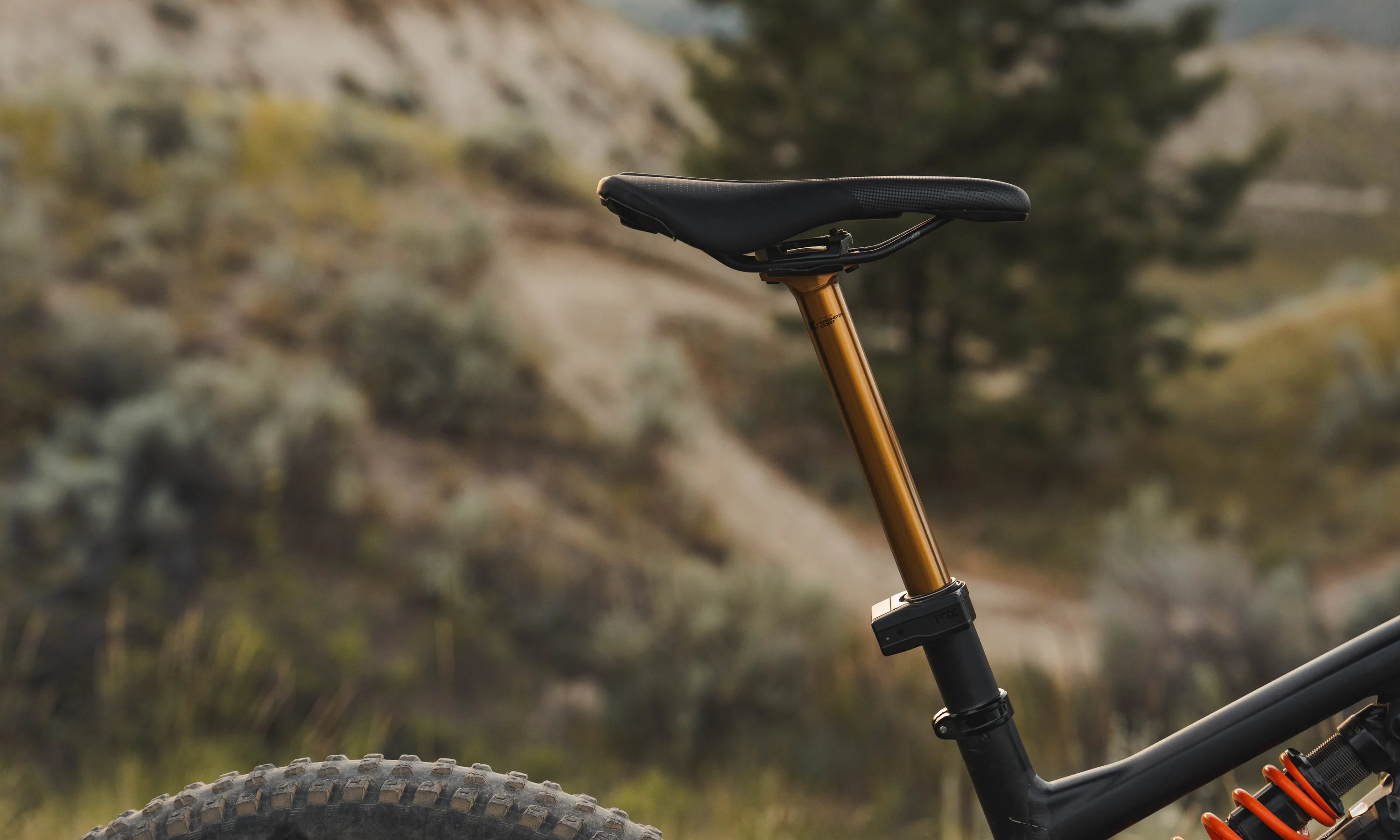Speed, adrenaline, and flow — three things that feel great on a bike. There are few things that can match the fun of going downhill on a mountain bike. So it's no surprise that downhill bike parks are becoming more and more popular every year.
It's not all about riding massive jumps or gnarly tech trails either. Downhill bike parks are accessible for every level of rider. There are fun flow trails and easy features out there for every level of rider, even beginners, to build their skills and have fun.
At a park, you can descend more vertical feet in a single day than you might do in a month of riding normal trails. Riding a lift or shuttle to the top conserves your energy and allows you to hone your descending skills until they’re dialed. If you want to improve your descending, there's no better way than riding the bike park.
Do You Need a Downhill Bike?
Many riders are unsure if they can ride their current bike at the bike park. Realistically, if your skills are adequate, you can ride any bike you want. I've seen excellent (and crazy) riders tackle downhill trails on hardtails and do it with style.
Personally, I like to use my REEB enduro bike. It's capable enough for most black and double-black trails, and it's what I race with so I like to train on it as well. Ideally, you just want a bike that you're comfortable and confident riding downhill on. But if you’re truly committed to riding at the bike park, nothing compares to a full downhill bike.
Downhill bikes are designed purely for descending. They don't have to make any compromises for climbing like a trail or enduro bike. DH bikes can give you more confidence in steep and rough terrain, on big jumps and drops, and they are often more forgiving. This is because they have more suspension travel than normal trail or enduro bikes and they utilize more aggressive downhill-focused geometry like slacker head angles and longer wheelbases for more stability. Riding a full downhill bike will allow you to really push yourself to go bigger and faster.
What to Look for in a Downhill Bike
 If you’re looking for your first downhill bike, the best time to buy is in the off-season. Like skiing, downhill bike park riding is seasonal, and you can find great deals when the lifts aren’t running.
If you’re looking for your first downhill bike, the best time to buy is in the off-season. Like skiing, downhill bike park riding is seasonal, and you can find great deals when the lifts aren’t running.
Most downhill bikes are going to have around 180-200mm of travel. They will generally use dual-crown forks because the additional upper crown adds stiffness for better control on rough trails and during impacts. The rear suspension will use a coil shock (or sometimes a downhill-specific air shock) that will easily absorb big hits, resist heating up during hard use, and give you more comfort and traction. This additional comfort can also reduce fatigue, allowing you to do more runs and ride for longer.
Downhill riding can be rough on your bike so these bikes are generally built to be more durable. If you own multiple bikes, it’s really nice to have a park-specific bike that you’re not as worried about damaging.
When it comes to buying a DH bike, it doesn’t need to be expensive. Carbon fiber is great, but aluminum is a good option because it's affordable and robust. Most downhill bikes use a 1x drivetrain with a chain guide to keep your chain on. Many will use a budget-oriented rear derailleur because it's one of the most vulnerable components on the bike. In general, simple and affordable components are going to be easier to maintain and cheaper replace once you start breaking parts. Since you won't be climbing with this bike, you can also run heavier, more durable wheels and tires that let you charge into rough and sketchy terrain without worrying about flats.
Of course, you can get as fancy as you want. There are great carbon downhill bikes that use super high-end components. The choice is yours. But no matter what you ride, if you’re out riding downhill, you’re sure to have a great time.
Check out our Downhill Bike Collection to find plenty of great options for the bike park.
For example, two great bikes for first-timers are the Scott Gambler and the Scott Voltage. They are affordable, durable, and have everything you need for an entry-level downhill bike.

























